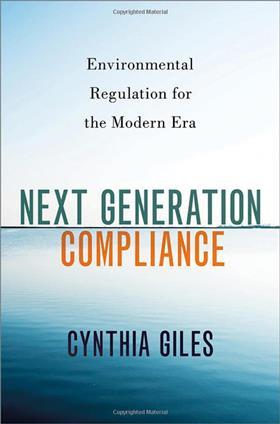Gaining a foothold on shifting sands
Next Generation Compliance: Environmental Regulation for the Modern Era
Cynthia Giles
£19.99, Oxford University Press
★★★✩✩
There is beauty in simplicity. As authorities try to find appropriate ways to regulate climate emissions and linked corporate reporting there is – one might argue – a perfect storm of complexity: the shifting sands of environmental standard-setting and the incoherence of methodologies. The crisis of climate change meeting the bureaucracy of regulation.

In any crisis one needs solutions. Next Generation Compliance offers a framework within which solutions may be found.
Cynthia Giles’ central thesis is admirably simple: there are lessons to be learned from why some regulatory approaches work – increasing compliance with a particular rule in line with its intentions – while others do not. Various explanations are given, explored through case studies, from a lack of reporting (meaning effective action cannot be taken) to wilful non-compliance (where the risk or level of consequence is not enough of a deterrent, financial or otherwise).
Based on her considerable experience at the top of the US Environmental Protection Agency, Giles proposes that rather than adding enforcement mechanisms after the fact, a more nuanced approach is required, with enforcement drivers baked in to regulatory rule-making. In Giles’ words, it is about ‘designing a rule so that compliance is the default…where implementation will be strong regardless of enforcement action’. This is intriguing in the realm of environmental regulation – particularly in the context of corporate reporting – given the area has not yet coalesced around an international body of rules (although the International Sustainability Standards Board continues its work).
There are a number of ‘obvious once you say them’ moments in Giles’ proposal. Staying with reporting, she suggests that transparency in identifying where regulated persons have failed to meet a standard is fundamental to the success of a rule. It should not be possible to talk around the subject; a binary response to compliance (albeit with justification, if appropriate) should be hard-wired into the relevant provisions. ‘Complexity,’ Giles tells us, ‘is where violators hide.’
So how does Giles suggest this is done? While acknowledging the ideas are heuristic, presented as part of a dialogue about what ‘good’ regulation in an environmental context might look like, Giles sets out a playbook for regulation design with an exhortation not to create a situation where choosing to violate a rule can appear viable. Continuous monitoring, avoidance of self-reporting, making it impossible to avoid admitting violations, evading ambiguity, and where possible requiring third-party assurance is the order of the day. Simple.
Tom Proverbs-Garbett is a consultant































No comments yet